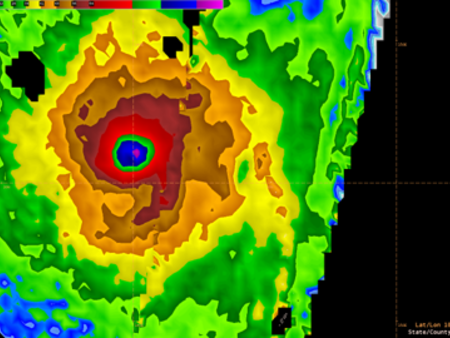Ocean Surface Foam and Microwave Emission: Dependence on Frequency and Incidence Angle
Surface roughness and foam are two main components of ocean surface microwave thermal emission. Surface roughness provides scattering element and modifies local incidence angle. Air in foam alters the dielectric property of the surface layer. Bubbles in foam also alter the curvature of foam- water interface and modify emission and scattering properties of the water surface itself. Whitecap coverage Wc is the most accessible oceanographic information to represent surface foam. For emission analysis, it is necessary to establish a function relating to Wc and the effective air fraction Fa interacting with electromagnetic (EM) waves. An empirical relation is established through analyzing several microwave radiometer data sets in high winds covering a wide range of frequency, incidence angle, and vertical and horizontal polarizations. A physical interpretation of the proposed Fa (Wc) relationship is discussed. The relationship is used to quantify several important characteristics of surface foam relevant to microwave emission, including effective air fraction and skin depth as functions of wind speed, microwave frequency, and incidence angle.
Hwang Paul A., Reul Nicolas, Meissner Thomas, Yueh Simon H. (2019). Ocean Surface Foam and Microwave Emission: Dependence on Frequency and Incidence Angle . Ieee Transactions On Geoscience And Remote Sensing , 57(10), 8223-8234 . https://doi.org/10.1109/TGRS.2019.2919001


